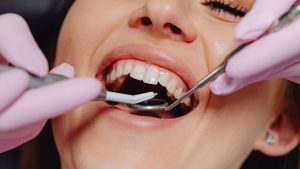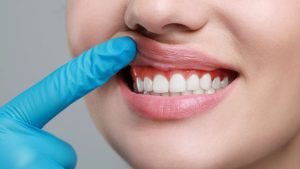As soon as your child’s first tooth has erupted, which generally happens between six months and a year, you will need to schedule their first appointment with a pediatric dentist. The first visit often involves very little treatment. It is more for the child to meet their dentist, for the dentist to assess if their baby teeth are developing properly, and to educate the parents about proper oral hygiene for children.
Introductions
It’s important to try to establish a non-threatening relationship between your child and their dentist. To help this along, your dentist may ask you to sit in the dental chair with your child during the examination. Or, your dentist may ask you to wait in the reception area during part of the appointment, so that a positive connection between your child and the dentist can be built. The method to ease your child’s anxiety depends on the child’s personality. Some children don’t fear the dentist at all.
Examination
During your child’s examination, the pediatric dentist will evaluate the health and development of the baby teeth, including checking for tooth decay, bite, or any oral issues with the gums, jaw, or surrounding tissues. If needed, the dentist will clean the teeth and determine your child’s need for fluoride. Asking questions will be encouraged and the dentist will educate the parent about proper oral hygiene and dental development issues to look for.
Proper Oral Hygiene
Providing education about maintaining your child’s oral hygiene is a big part of the first appointment. The routine slightly changes as your child develops, so some helpful tips your dentist may provide you with include:
- Watching out for signs that your child is teething; this is the indicator that their baby teeth have begun to erupt.
- Maintaining proper nutrition for healthy teeth.
- Brushing twice a day with a grain-of-rice-sized dollop of fluoride toothpaste, especially after consuming foods or beverages.
- Teaching your child to spit out excess toothpaste after brushing.
- Refraining from letting your child go to bed with a bottle since this can lead to cavities.
- Increasing fluoride toothpaste to a pea-sized amount after the age of three.
- Watching if your child develops any bad oral habits, such as thumb sucking, tongue thrusting, or lip smacking.
- Placing the toothpaste on your child’s toothbrush until they reach six years of age.
- Monitoring and assisting your child while brushing until they reach seven or eight years old.
- Scheduling dental checkups once every six months to help build your child’s comfort with their dentist, monitor tooth development, and to treat any oral problems that arise.


